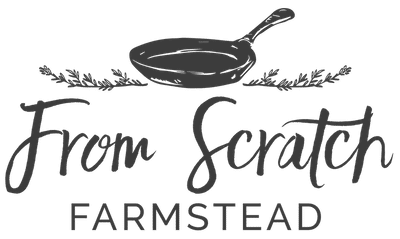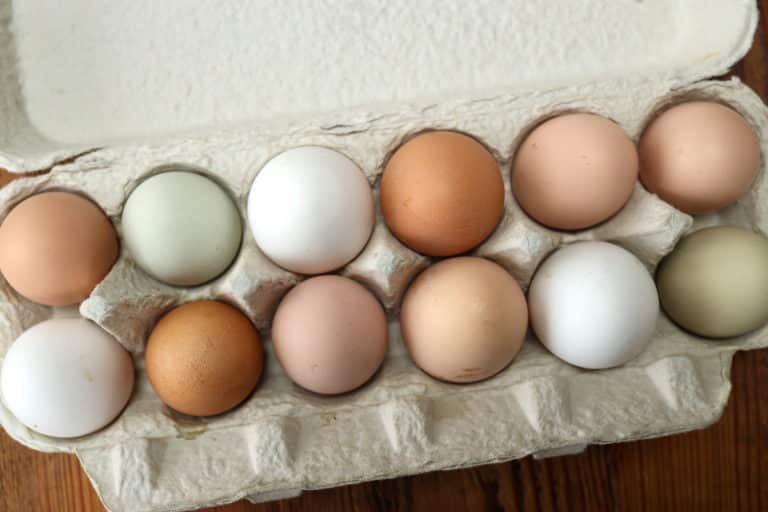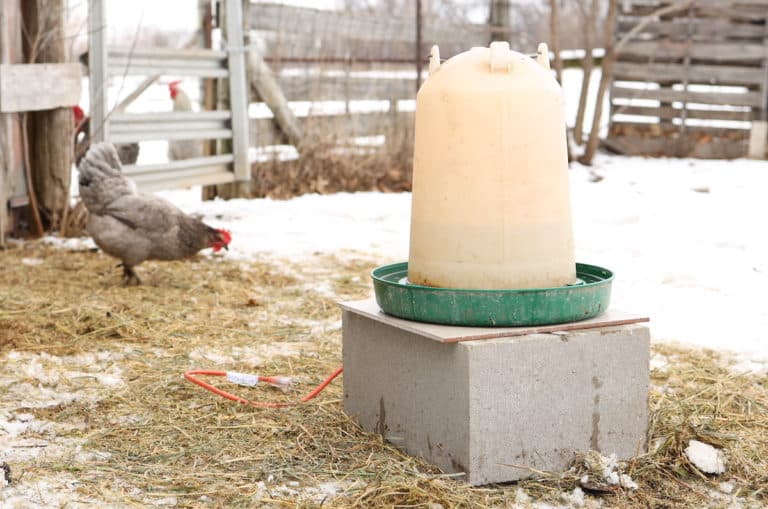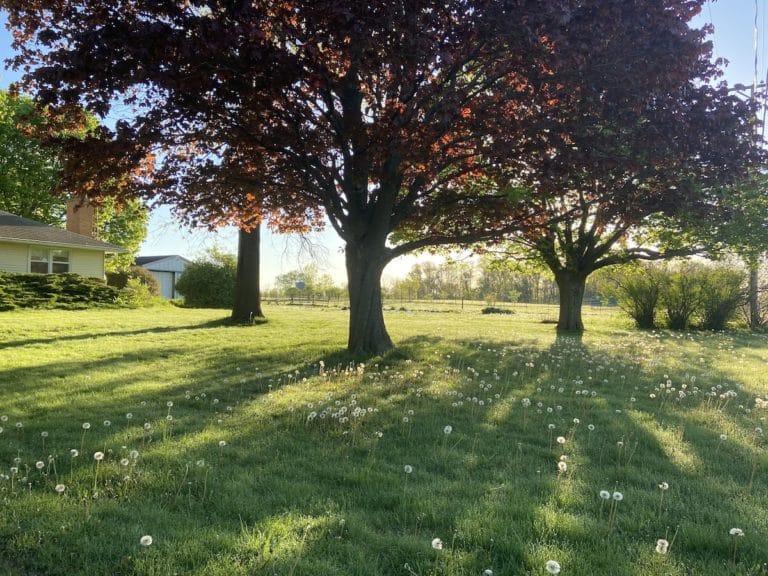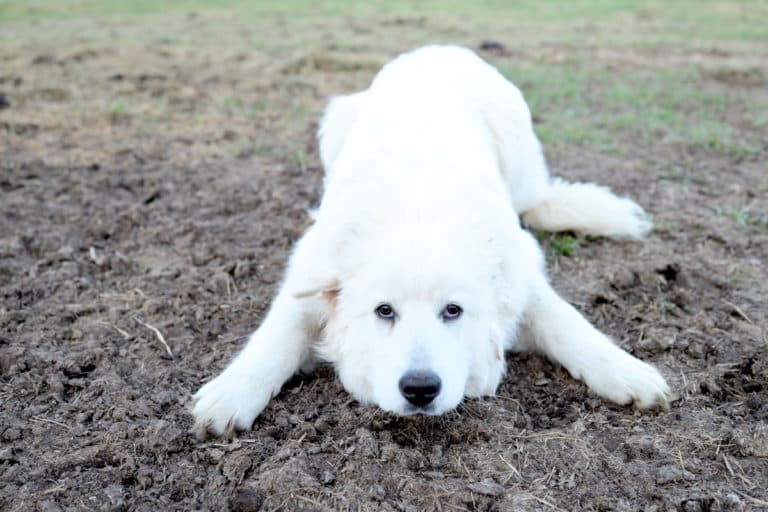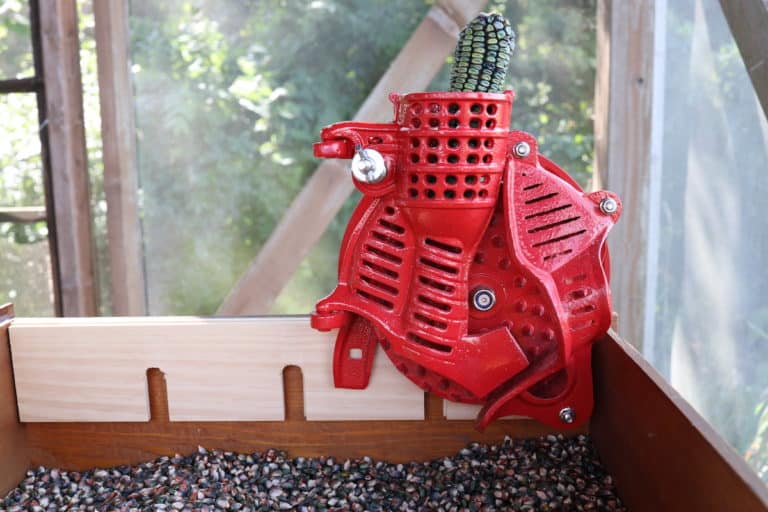10 Best Homestead Layout Tips + 5 Acre Example
Laying out your homestead is simultaneously one of the most exciting and overwhelming tasks to take on. In this post we’ll explore some basic homestead layout principles and share our 5 acre homestead layout as an example.
Starting Your Homestead Layout
You won’t find a plug-n-play template for laying out your homestead. No two homestead properties are alike, after all.
Even if you find two with nearly identical layouts, you’ll likely find varying soil types, emphasis on one crop over another here, one animal over another there, buildings will serve different purposes, and other ever evolving nuances.
And if you see a system you like on another homestead, it’s unlikely it will replicate exactly the same on your property. You may be able to use it for inspiration and end up with something similar. But it will take creatively and ingenuity on your part to make it work on your own land.
That said, with the right inspiration and guidance, it’s entirely possible to plan out your dream homestead layout! This is your time to reach for the stars and have fun with it!

So, whether you’re starting with a blank slate of land, or a property with an existing home, outbuildings, and infrastructure, where do you begin?
Let’s first look at a concept that has led the way in designing land for food production and sustainability.
An Introduction To Permaculture Design
The concept of Permaculture came about in the 1970’s by combining two words, “permanent” and “agriculture.”
This permanent agriculture gave farming and homesteading a new mindset. Rather than fixating on how to extract the most out of the land and what brings the biggest profit, Permaculture instead considered what was best for the land, the farmer, and their long-term health and viability.
In it’s simplest form, both land and caretaker of the land must serve each other. One is not master over the other. They form a symbiotic relationship to truly be sustainable for the long haul.
Core to Permaculture is efficient design.
Most any Permaculture Design book will provide a simple zone map for your land. Zone 0 is your home, or where you spend the most time. Zone 1 is what immediately surrounds your home and is most easily accessible. This proceeds all the way out to Zone 5, which is the furthest out reaches of your land.
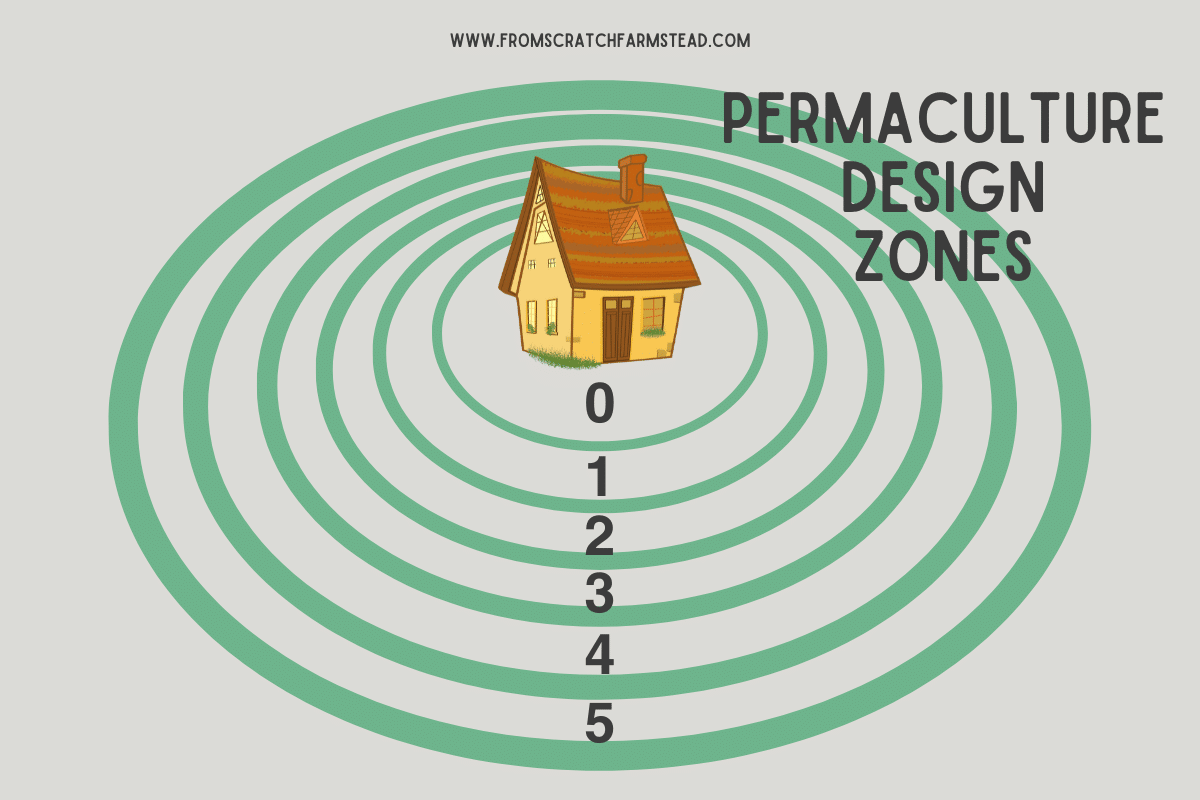
The concept is that you want to stack as many everyday functions as you can within those first couple zones. Feeding chickens, watering your garden, taking out kitchen scraps to the compost heap—all occurrences that will happen most days, or even multiple times a day.
It simply wouldn’t make sense to put your chicken coop at the furthest corner of your property where it would likely get neglected—unless you’re in more of an urban homestead setting.
My point here is not that you need to read every book on Permaculture (although perusing one from you local library or elsewhere might be time well spent!). Or, you don’t necessarily have to take one of the intensive Permaculture Design Courses (PDC) being offered around the country and globe, either.
While I did take a Permaculture Design Course (PDC) a few years back, grasping just a few basic Permaculture design concepts is enough to help you get going on your homestead layout!
10 Homestead Layout Tips
Many of the following homestead layout considerations are derived from different Premature Design principles.
1. Personal Values & Goals
Your homestead layout needs to match with the homesteading lifestyle you envision. In other words, your values and goals as a family should serve as a filter for shaping your homestead layout. This big picture perspective is your starting point.
If a top value is to travel, then building your homestead around a milking animal may not make the most sense. Or, if above all you have a goal to be living off-grid, then maybe focusing your efforts on food production needs to take a back seat until you have your desired alternative energy systems in place as a foundation.
If your family’s values and goals aren’t yet crystal clear, consider NOT doing anything too drastic on your homestead until you really develop a strong sense of long-term vision and direction.
2. Location, Location, Location
Most homesteading endeavors involve seasonal, weekly, or even daily time. Sometimes even multiple times a day.
You’ll want to very carefully consider things like:
- Where and how will I store feed and/or hay?
- Where is my source of water and how will I get water to animals or crops?
- Where should I place fence gates?
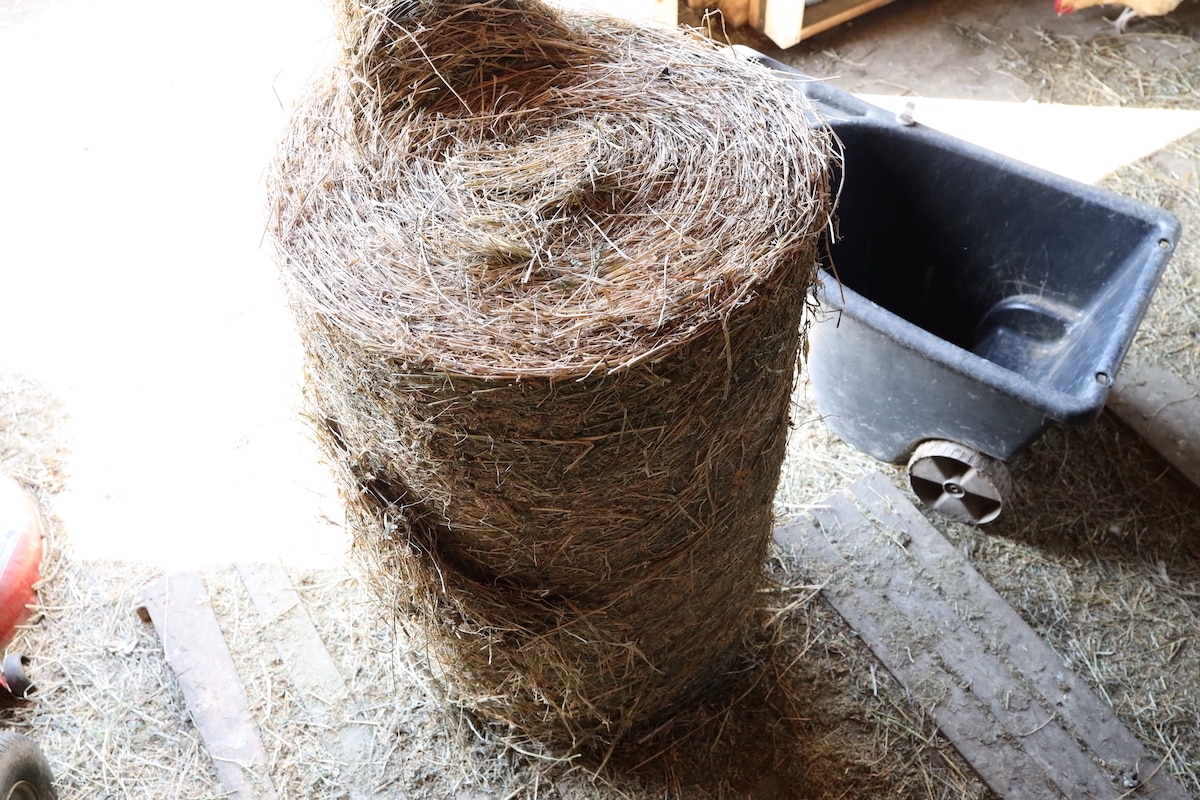
It may not seem like big deal initially to haul a 5-gallon bucket of water out to a field. But when you add those trips up over a decade, that becomes a tremendous time and energy pit.
Some even count the number of steps to different areas of their property before deciding where to locate something. Your time will be your most valuable resource on your homestead, and placement of structures, storage, and infrastructure can really make or break your efficiency.
3. Plan with the Whole in Mind
Your land is not a singular entity. It plays a part in a larger ecological system that surrounds it. And on a smaller scale, different systems or areas within your homestead don’t simply exist apart from the whole. One system very much can and will impact other systems.
Don’t just plop something somewhere without considering the impact it will have on what’s around it. This can be on your land, your neighbors land, or the greater system of wildlife, waterways, plant life, and other natural features and patterns that surrounds you.
4. 3-Objectives Rule
I don’t recall if it had an actuall name or not, but something that stuck with me from my Permaculture Design Course I call the 3-Objectives Rule.
This was a Permaculture concept that anything you implement on your land should never just serve one singular or shortsighted purpose. Rather, you should be able to explain multiple positive outcomes that your idea is accomplishing.
For example, you could simply say, “I’m going to plant a garden here.” Or, with the 3-Objectives Rule in mind, you could say, “Planting a garden here will provide optimal sunlight and drainage for my crops, I’ll utilize no-till growing methods to promote the most microbiology in the soil, and I’ll focus primarily on crops I can preserve or store that will feed my family all year round.”
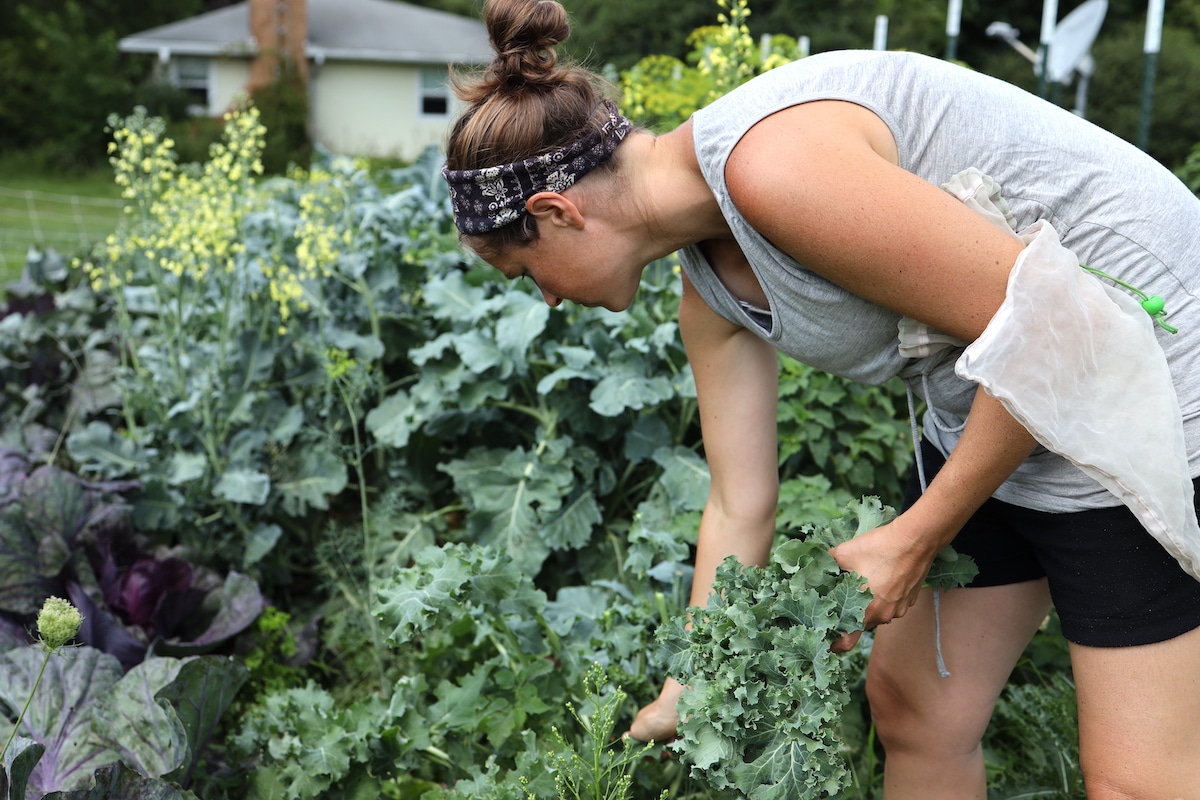
The goal here isn’t to overthink or overcomplicate anything.
The goal is to maximize the design of your homestead layout by stacking functions. It’s also a tool to help you adhere to the prior point and observe how the system you’re implementing interacts with the whole of your land and what’s around you.
Looking at the many objectives versus the singular objective helps you feel confident and purposeful in your layout decisions.
5. Consider Temporary or Moveable Solutions
Joel Salatin is the master of avoiding permanent anything on his farm. To maximize your options long term, temporary or moveable systems and infrastructure on your homestead will be your best friend.
This can be especially valuable early on in the life of your homestead when you might still be finalizing all the details of your long term design.
Not sure yet if an area should be fenced pasture or serve another function you’re considering? Find a temporary fence setup that gives you flexibility down the road.
Having a hard time figuring out the right location for your chicken coop? Build a coop on a trailer or skids that gives you the option to move around in the future.
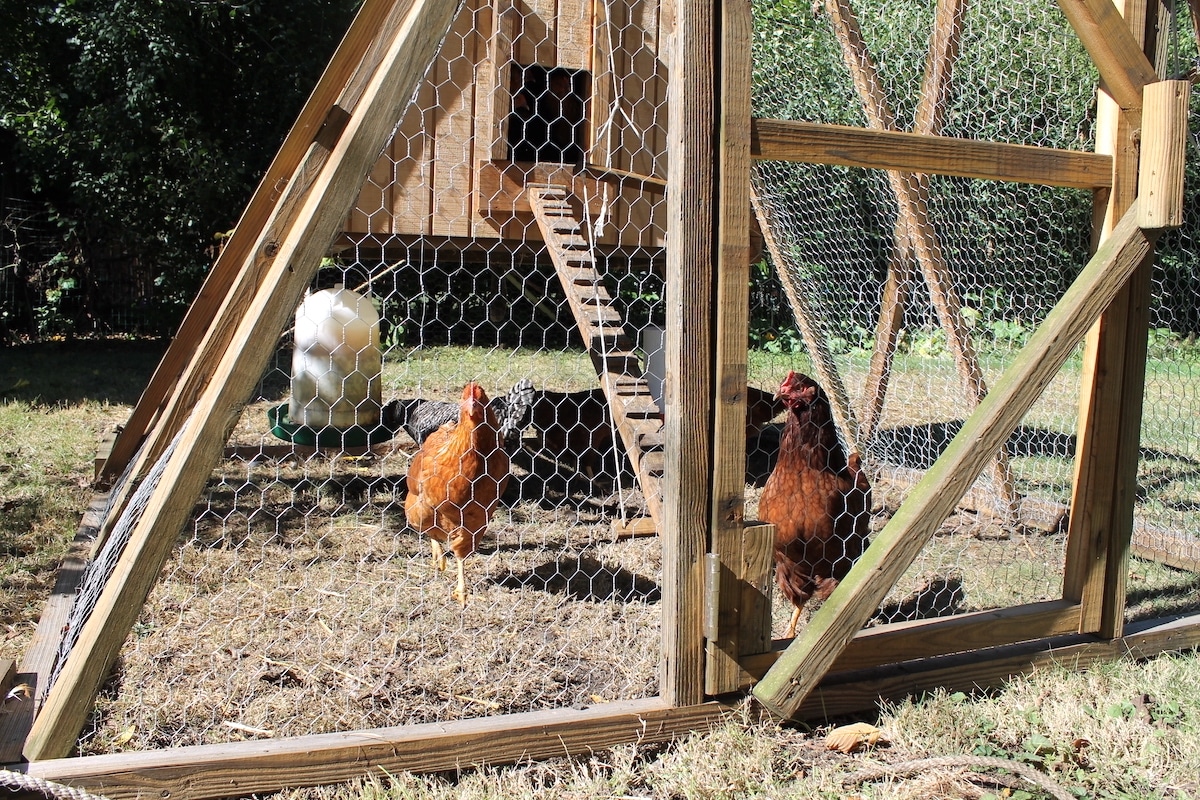
And if you’re not ready to commit to a garden layout or location yet, try starting with pots or small planters. Or just till up a small plot, maybe even in various potential garden locations, to begin growing in.
Trialing different temporary setups can give you the time and assurance you need before locking in to something permanent.
6. Listen to your Land
Your land has a powerful voice. The native plants, the flow of water, the soil types, the sunlight captured at different gradients—all of these can help inform what your land is best suited for.
Many will recommend you do nothing on your land until you’ve lived on it for at least one full year. The point is to observe it throughout all four seasons and allow what you observe to speak to your homestead layout.
The area where water collects may not be the best spot for a garden but may be suitable for elderberry or other medicinal herbs. The opening where young mulberry saplings naturally sprung up may already be a start for a future orchard.
7. Plan Incremental Changes
Nature moves slow. Often we are wisest to work at natures pace when it comes to land design.
When we moved onto our property, the back pasture was in sad shape. It was an old hay field that sat fallow for the better part of a decade. The many layers of undergrowth piled up and suppressed much of the clover, alfalfa and other native plants and grasses in the field.
I was tempted to just plow and replant the whole field. But instead, through rotationally grazing our cows on it, slowly removing the undergrowth, and managing the pasture when necessary with mowing, the health and diversity of the field has improved dramatically in just a few short years.
Maybe instead of completely regrading the land, a small swale or berm can take care of some drainage issues. Rather than coming in and completely clearing out a wooded area, selectively thin it out over time.
Trust nature, come alongside what it is already accomplishing, and work at its pace.
8. Get Input
Seasoned farmers and homesteaders have a lot of knowledge to offer. Run some of your ideas past them. Or ask for their own unique thoughts.
A neighbor in particular may have unique insights or thoughts to share as they’ve interacted with the previous landowner of your property or worked with a similar land type.
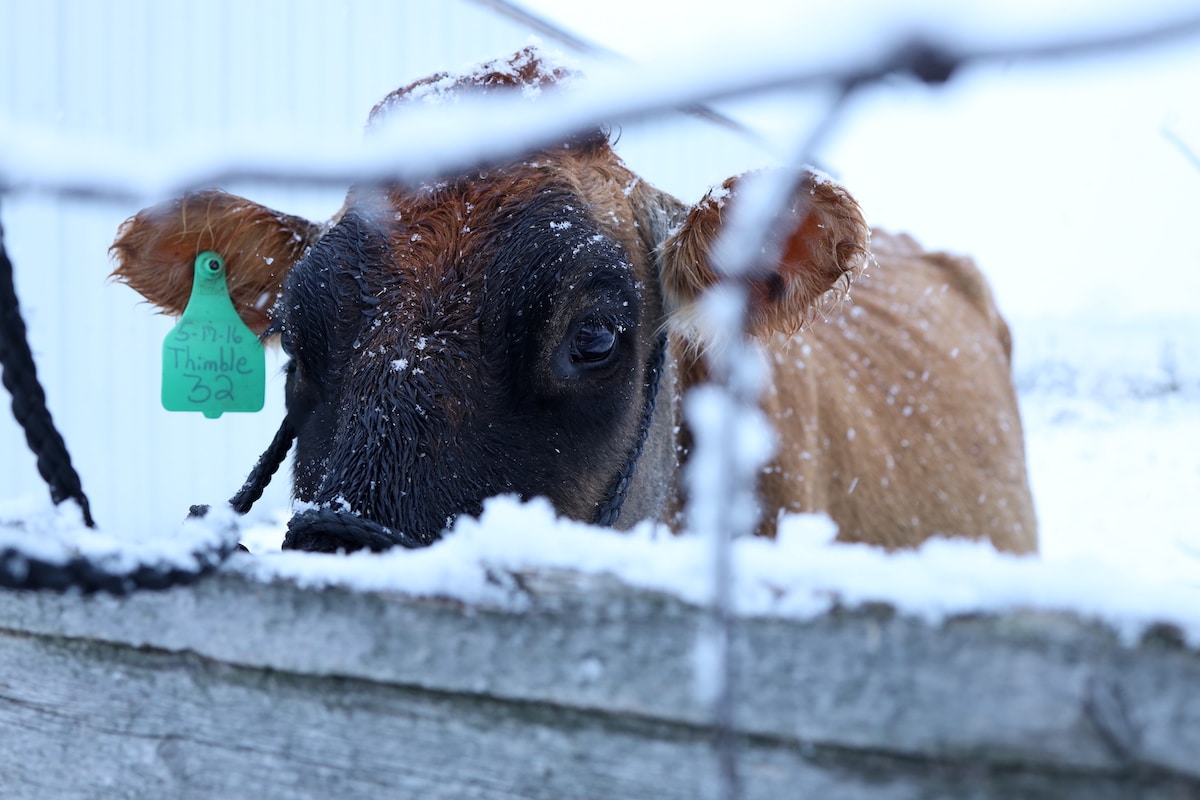
It may even be worth hiring a consultant to give professional design input. They can help design garden layouts, food forests, grazing patterns, and other infrastructure and building layouts. And perhaps they can even offer input on a timeline and cost estimate of when and how to implement your design.
You’ll have to do some searching for design experts offering consultation in your area. But start by connecting with nearby Permaculture Design Course instructors or other local organizations focused on land and ecological stewardship.
9. Take It Slow
Shaping your homestead can be (and many would argue should be) a long, slow process. Don’t expect everything to take place overnight.
We like to try and tackle one major project a year on our homestead. When we’ve broken this rule and tried to tag something on to an already overloaded plate is when we’ve learned the hardest lessons.
Maybe year one is getting some fencing in place and starting small with animals. Year two is establishing an orchard. Year 3 is building a chicken tractor and raising meat chickens. Then, year 4 you build a coop and add laying hens. Year 5 you’re finally ready to finalize a garden layout and location!
Burnout and fatigue from being too gung-ho early on is very real in the homesteading world. Each new homesteading adventure comes with a learning curve.
Take it as slow as you need to when getting something new off the ground. Then, only add more as capacity allows.
10. Learn from Failure
You are going to make mistakes when designing your homestead. And that’s OK!
Instead of beating yourself up over things that don’t turn out as expected or focusing on the negatives, view them instead as an opportunity!
There are lessons and takeaways in every failure. Let them be your greatest teacher. Use them to refine yourself and your homestead.
Something may not have gotten placed in the most ideal spot. Maybe you didn’t fully think through getting equipment in and out of a fenced area. Or maybe you didn’t account for that tree you’re planting blocking the nice view you have of your neighbors pond until after it’s in the ground… yep, that happened to us.
All these are opportunities to learn from and improve your homestead with over time.
Our 5-Acre Homestead Layout
By way of example, we’ll go through all that we have going on at our 5-acre homestead. Remember, the goal isn’t to replicate exactly what others are doing. But we hope it can help spark inspiration for what’s possible on a small homestead.
We’ll follow the Permaculture zone system as we talk through the areas of our homestead. So, starting at our home (Zone 0), we’ll then move outward as we talk through our property.

Home
Many homesteads will come with a home already in place. This was the case for us. If you are building a home, you’ll likely be working with an architect or civil engineer on the placement. What we appreciate about the placement of our home is that it’s surrounded by a canopy of mature shade trees. Even on the hottest days it helps keep our home cool and provides nice shade for outdoor homestead activities, like processing chickens. Our house also sits at a high point on our land for good drainage. The home isn’t central on the land, which we don’t mind. We’d prefer it be tucked more toward a corner like it is to allow the most space for whatever we are growing on the land.
We will mention that if there’s one part of a home that’s absolutely essential on a homestead it’s the Mud Room! Our Mud Room gets heavy use all year round—from sloppy early spring when winter thaws to an entry point to our basement storage racks for all our fall harvesting. You want a space that’s functional and where you won’t get upset when the dirtiest of outdoor jobs or play get tracked back inside!
Perennial Foods & Plants
Planting food producing perennial plants around our property has been a priority for us. Just outside our back door is a large asparagus patch we planted. A small wooded section behind our home is thick with black raspberry bushes. Near our kitchen garden lies a rhubarb patch and red raspberries. And we’ve also enjoyed numerous mulberry trees sporadically planted around our home and fence lines.
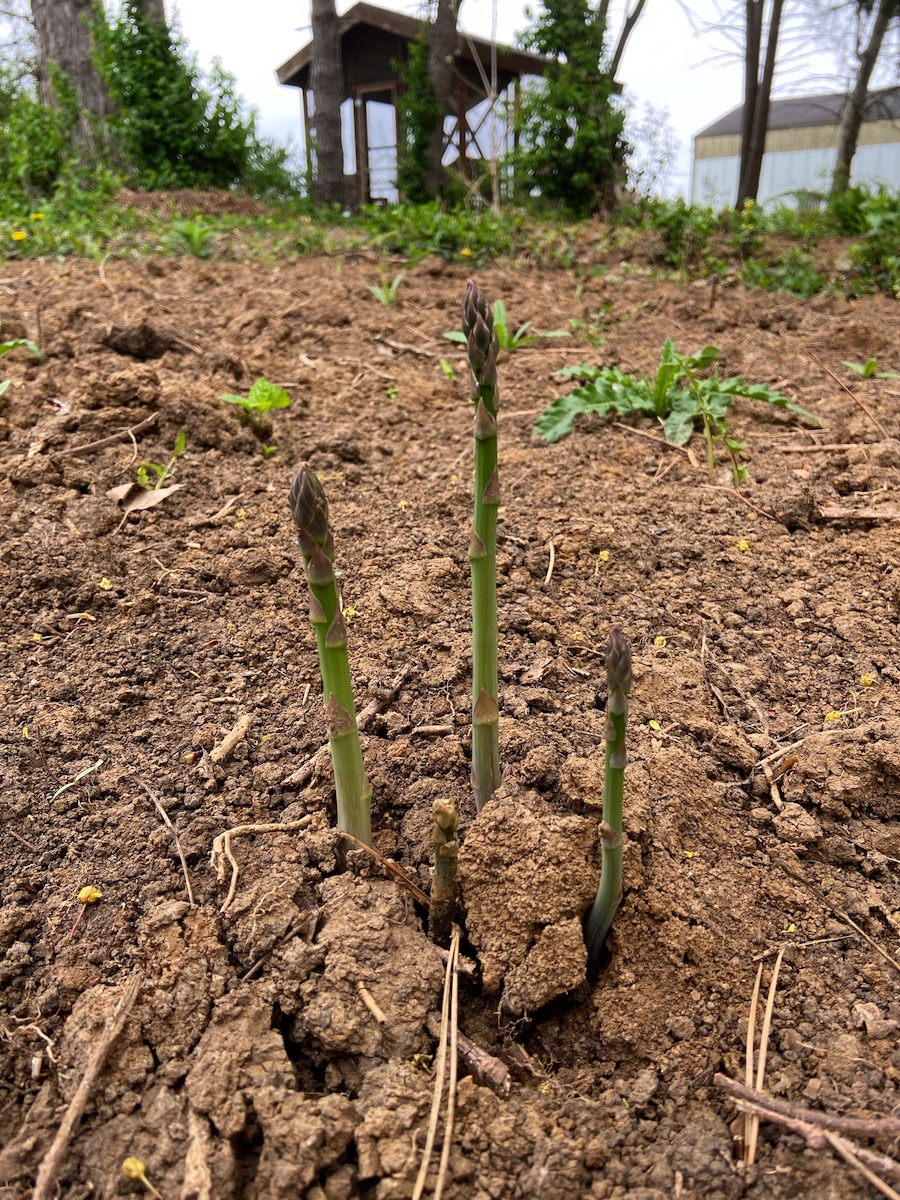
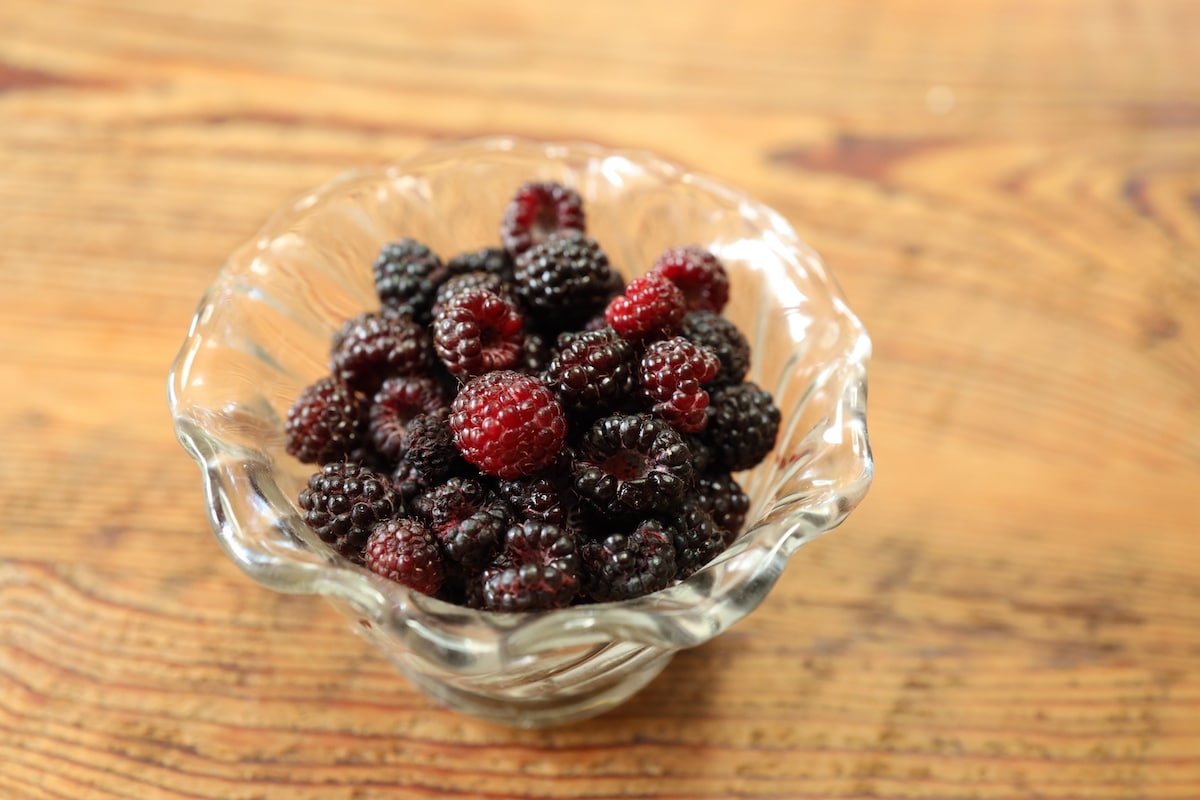
Pig Pen
Also tucked into the small wooded section behind our home we put up some hog panel for a pig pen. The walnut and pine trees drop forage for pigs seasonally while providing some natural shelter. And it is also an easy location for us to run kitchen scraps out to being just out our back door. As part of the pen we installed a fencer for running electric fencing around the property. I’ve appreciated being able to glance out my back window, especially on cold winter days, and see the blinking light of the fencer assuring me it’s on and working properly.
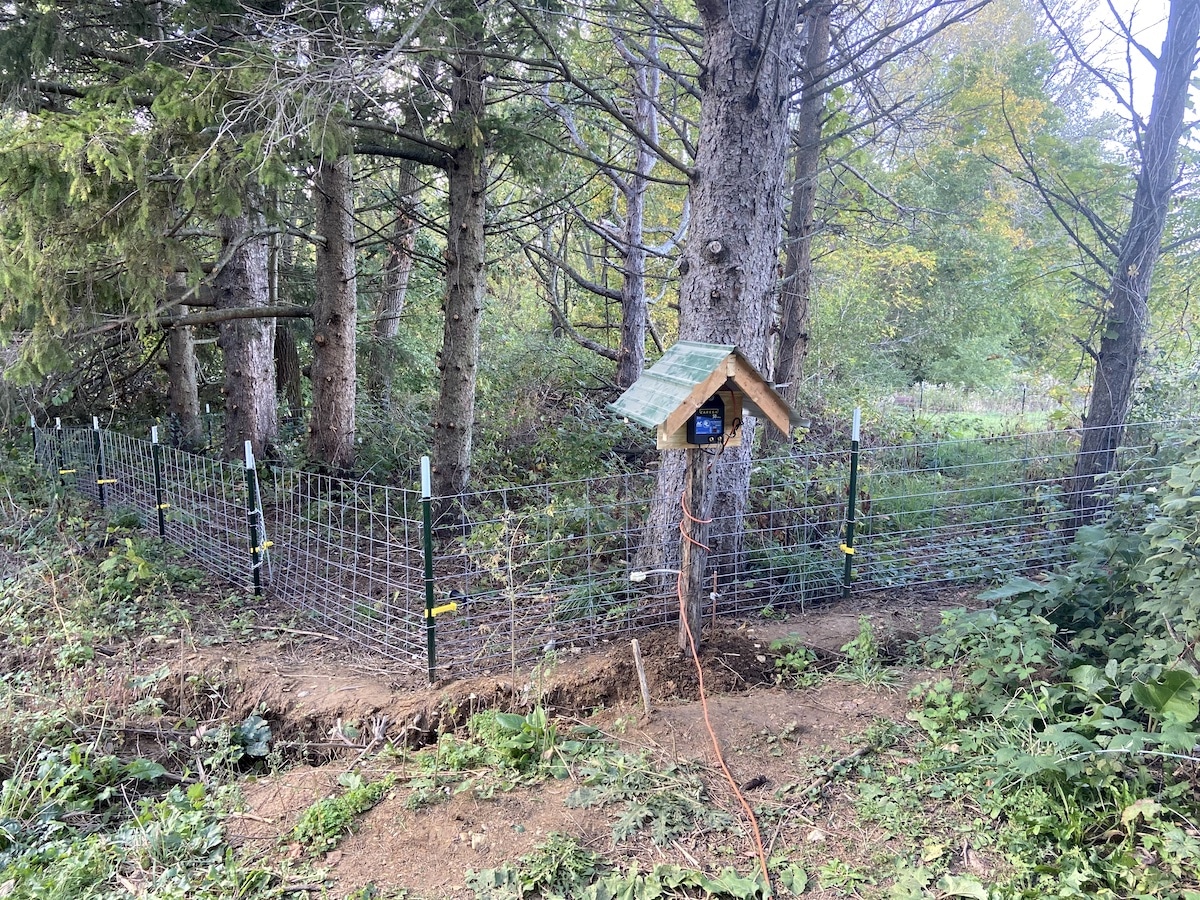
Compost Area
Our compost pile is currently inside the pig pen. This works for now because we’ve been slow to actually get more pigs to fill our pigpen until we know we have enough capacity to care for them. The long term plan is to build a compost bin system out of easy to track down materials like pallets. Either way, keeping your compost close by to your home where you can easily discard kitchen scraps is a must. We also have a compost pile near the barn that collects animal manure we clean out of there.
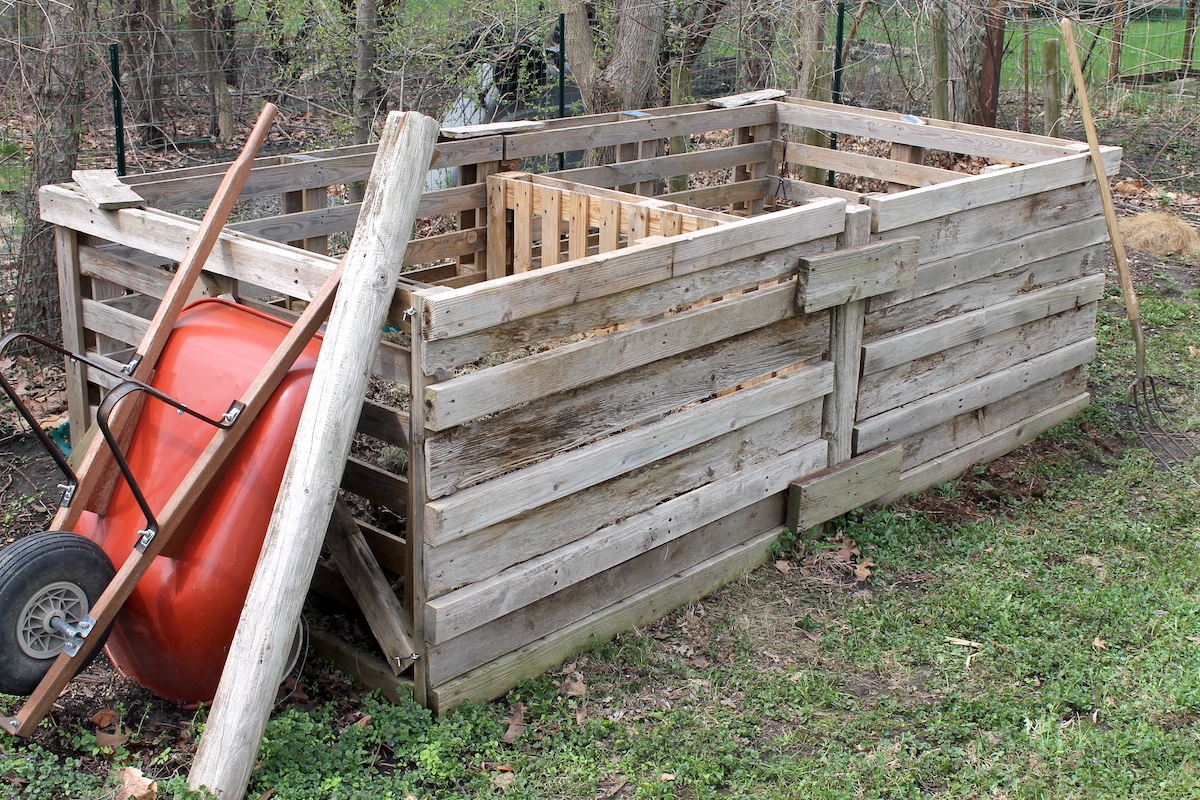
Screen Shack
We inherited a slightly rundown, screened-in outdoor space that we dubbed the Screen Shack. It’s awesome! Because of the small wooded area behind our home, mosquitoes and other bugs can be terrible certain times of year. The Screen Shack allows us to eat meals together outside, setup food when we host outdoor gatherings, or just have a nice place to cozy up with a good book, cup of coffee, and enjoy the beautiful views this screened room offers around our property.
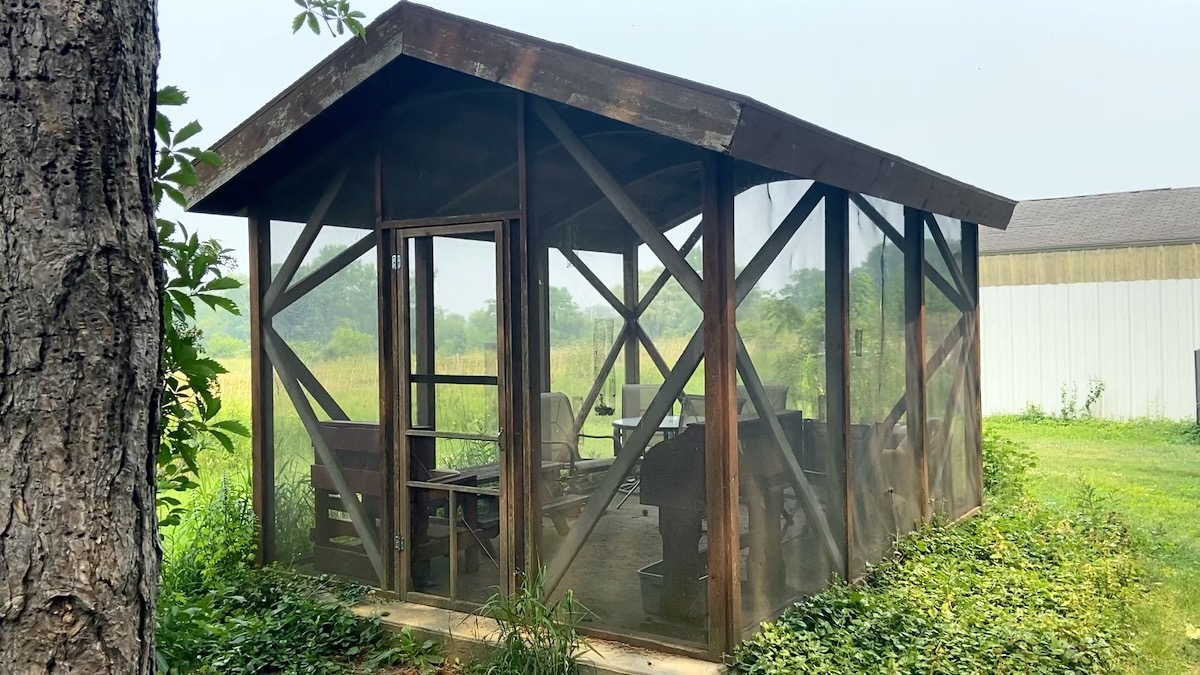
Barn + Chicken Coop
A 25’ x 50’ pole barn with electric and a water hydrant has become the hub of our homestead. This is where we raise our chicks every spring in the brooder. All our feed, hay, tools, and equipment are stored in there. About 1/3 of it is built out as an animal stall that gives our cows shelter when weather gets bad. And we even decided to build an 8’ x 16’ chicken coop right inside the barn. All my daily chores and tasks around the homestead operate out of this space. So it’s nice that our barn is just a short distance out our back door and mudroom, but still far enough to have a bit of separation from daily family activities.
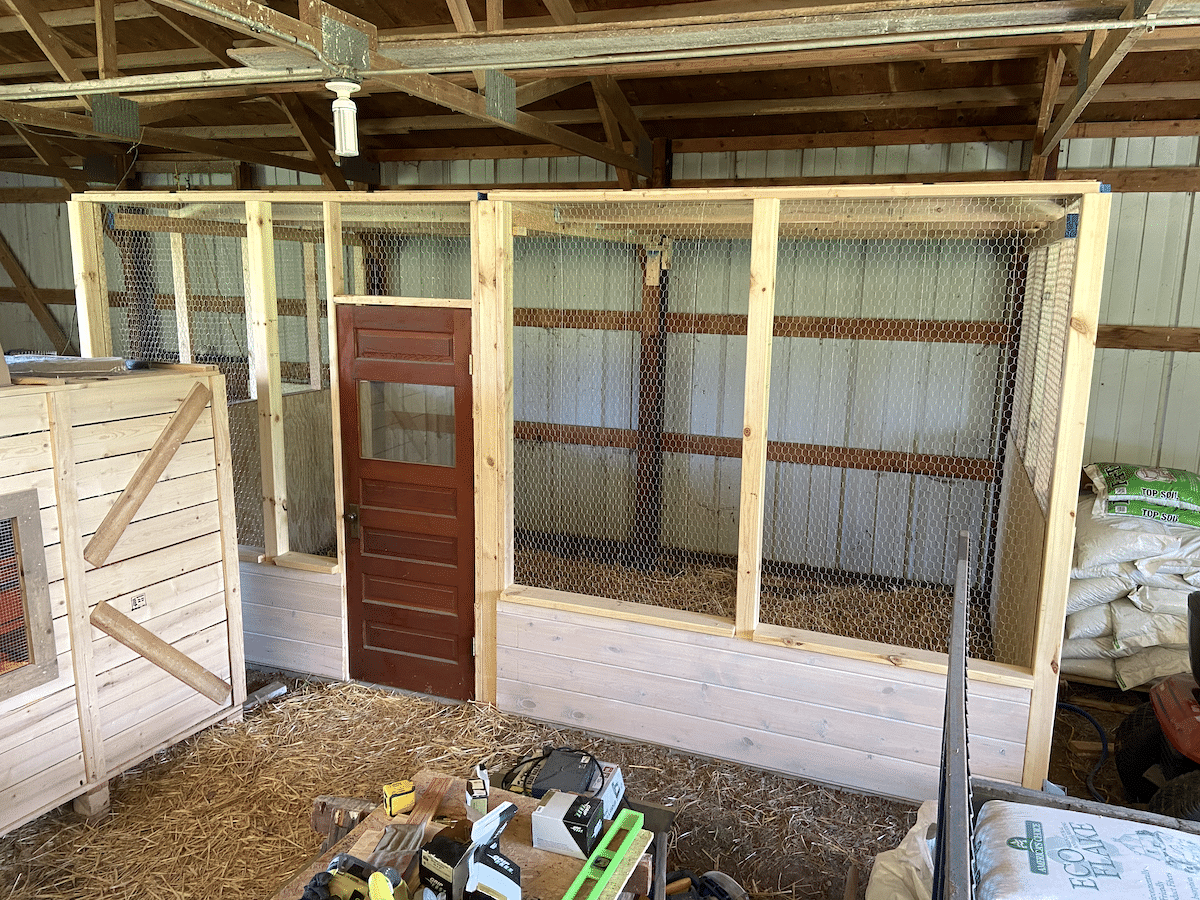
Vegetable Garden
We located our summer kitchen garden outside of the tree canopy surrounding our home so it gets full sun. Yet, this space is close enough to keep close tabs on how things are growing, the weeding we need to keep up with, and what needs harvesting. While I’d love to someday build a nice looking permanent fence around our garden area, we’ve found that electro-netting fencing has done an adequate job keeping our chickens and other unwanted garden intruders out—especially early in the spring as things are getting established.

Kid-Friendly Orchard
Just beside the garden we planted 4 dwarf apple trees. We have a separate larger orchard that’s further out, but the goal for this space was to be accessible and welcoming for hands of any size. The dwarf trees stay small, so our kids or visitors can easily go pluck off a ripe apple whenever they’d like!
Permanent Fenced Paddock
Beside the barn we have a 1/2 acre paddock surrounded with a permanent woven wire fence. If you have animals, it would be hard to get by without some area of permanent fencing. And it’s also beneficial for this area to be relatively close to home and easily within view to check on things. This is where we overwinter our cows. The addition of an automatic heated waterer has really helped cut down on winter chores and also given us a place to keep our animals when we leave the homestead and be assured they’re staying put and have constant access to water.
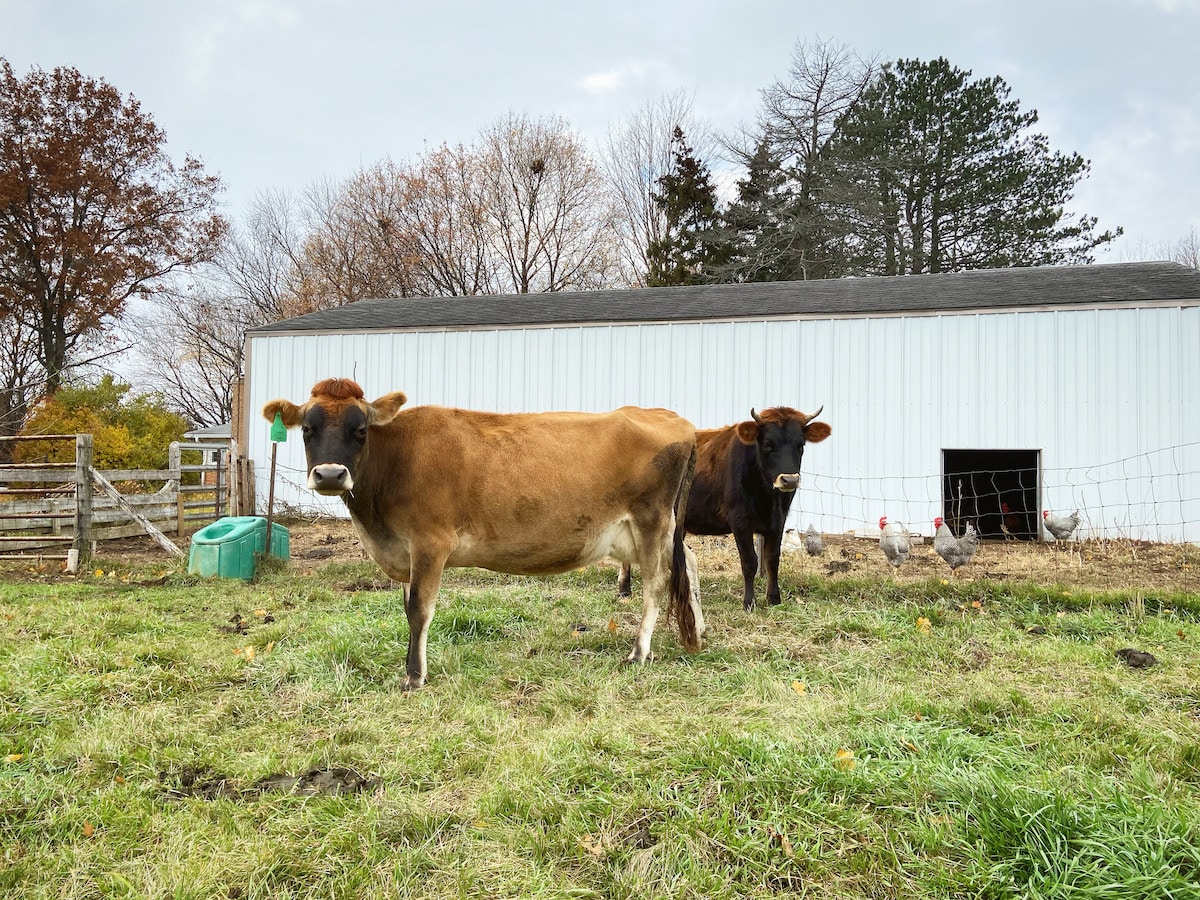
1/4-Acre Self Sufficient Homestead Garden (storage crops, orchard, meat chickens)
This 1/4 acre self sufficient garden space is a fun example of putting many Permaculture Design principles together. We began by planting 3 long rows with 10 fruit trees each. Between those rows we plant storage crops where one row grows our potatoes and the other we plant the three sisters in—corn, beans, squash. Those 5 rows are spaced with 6’ grassed alleyways between each row so we can pull chickens tractors through and raise a year’s worth of meat chickens.
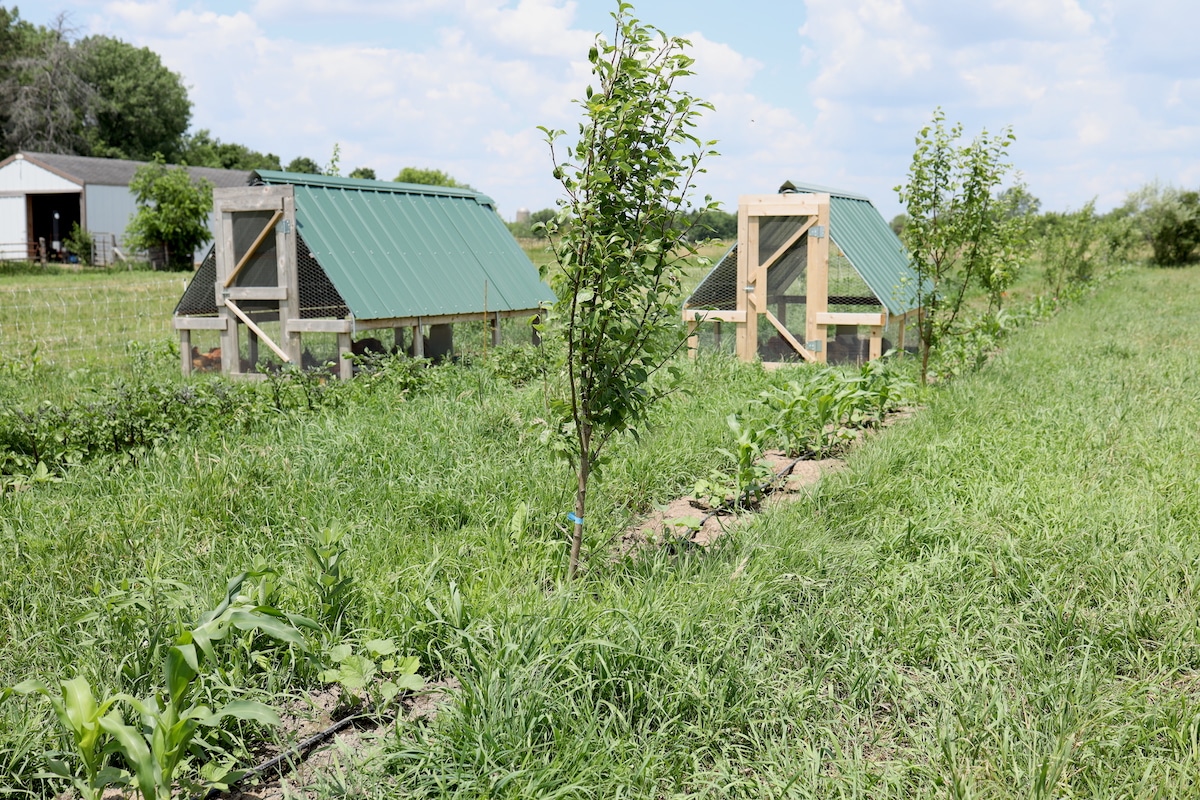
It wouldn’t hurt to locate this system close to home since so much happens there. But in reality, the orchard and meat chickens only need seasonal tending and once the storage crops are established they require little attention until fall harvest. We do run an automated drip irrigation system out to this area which also helps it be a bit more hands off.
Back Pasture (with temporary fencing)
The largest chunk of our land (about 3.5 acres) is set aside for our cows (or other future ruminants) to graze on. This field has no permanent fencing around it. We purchased a bunch of Premier 1 electro-netting fencing used off of Facebook Marketplace and use that for rotational grazing. So, about May through November, our cows are out on pasture being moved to a new paddock to munch on each day. The temporary fencing has worked great to keep our cows in, but, as we mentioned, would not be suitable to handle snow loads during the winter months.
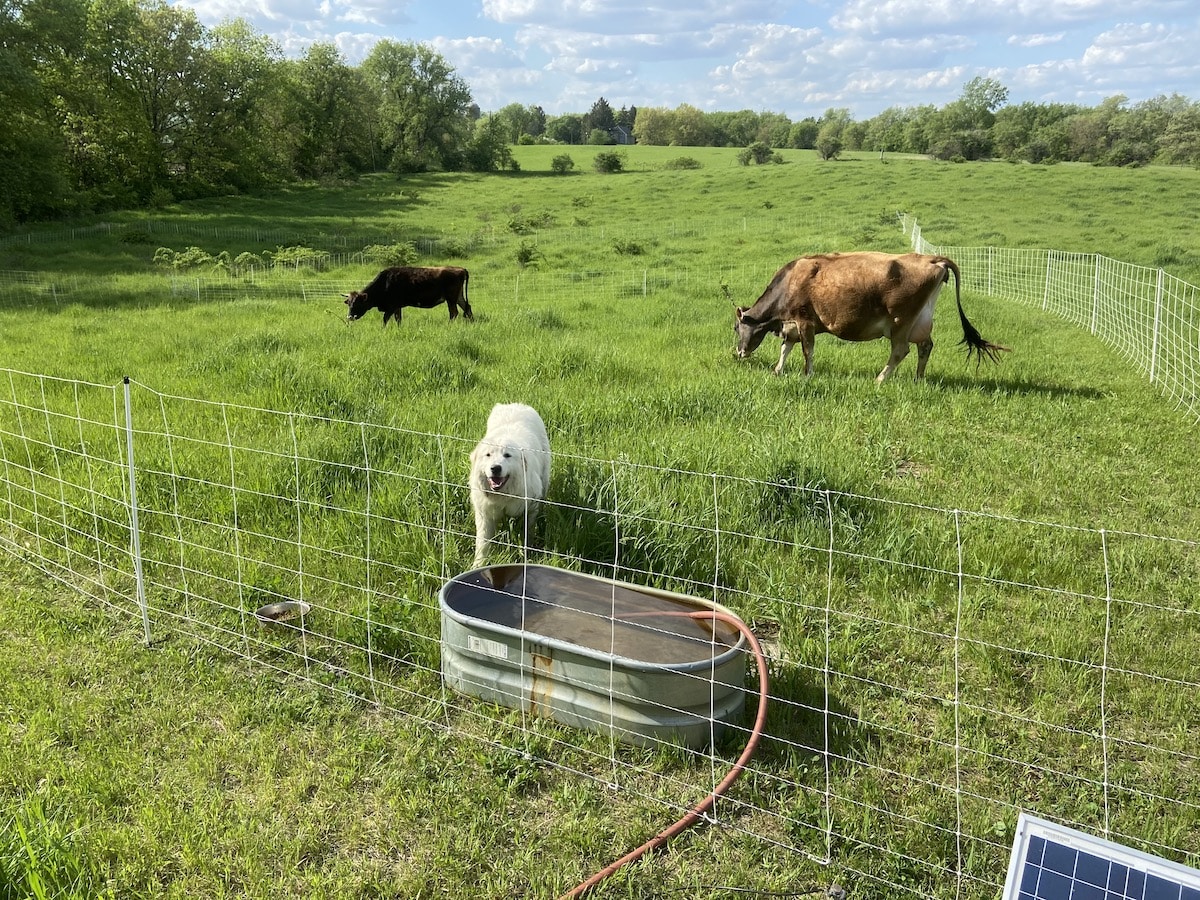
There’s no getting around grazing being expansive on your land and potentially time consuming, especially if rotating your animals often. We have no utility vehicle to quickly run to the far reaches of our property. We also run multiple 100’ hoses from the hydrant in our barn to fill water troughs wherever our cows are located. Someday, we may be able to afford options like a permanent permitter fence, running a water supply more conveniently out to back field, or some sort of ATV for quick transport. But for now, it’s a calculated cost for this slow and methodical process of how we rotate our animals in our back field.
Future Homestead Layout Plans
We’ve been able to get quite a bit up and running on our homestead in just a few years. But we always have ideas and thoughts for what’s on the horizon. Here are some future homestead layout ideas we’re hoping to get to!
Small Ruminants
We would love to include a small flock of sheep or goats into the mix. The hope would be to fence off a large section of the lawn surrounding our house and utilize the grazing to reduce the amount of mowing we need to do. We’d also love to graze them occasionally in back with our cows for the benefits of multi-species grazing where they can help clean up whatever the cows leave behind. Plus, sheep in particular can provide a source of fiber on the homestead to produce a totally new material for turning into clothes and other goods.
Pigs in the Orchard?
Part of the thinking long term with the orchard/storage crop area was that, at least part of the year, we can move pigs onto the grassed alleyways to raise them on pasture. We’d need the fruit trees to be mature enough to handle this. But the windfall fruit from the orchard could then get put to very good use helping to provide natural forage for pigs, and possibly other small ruminants.
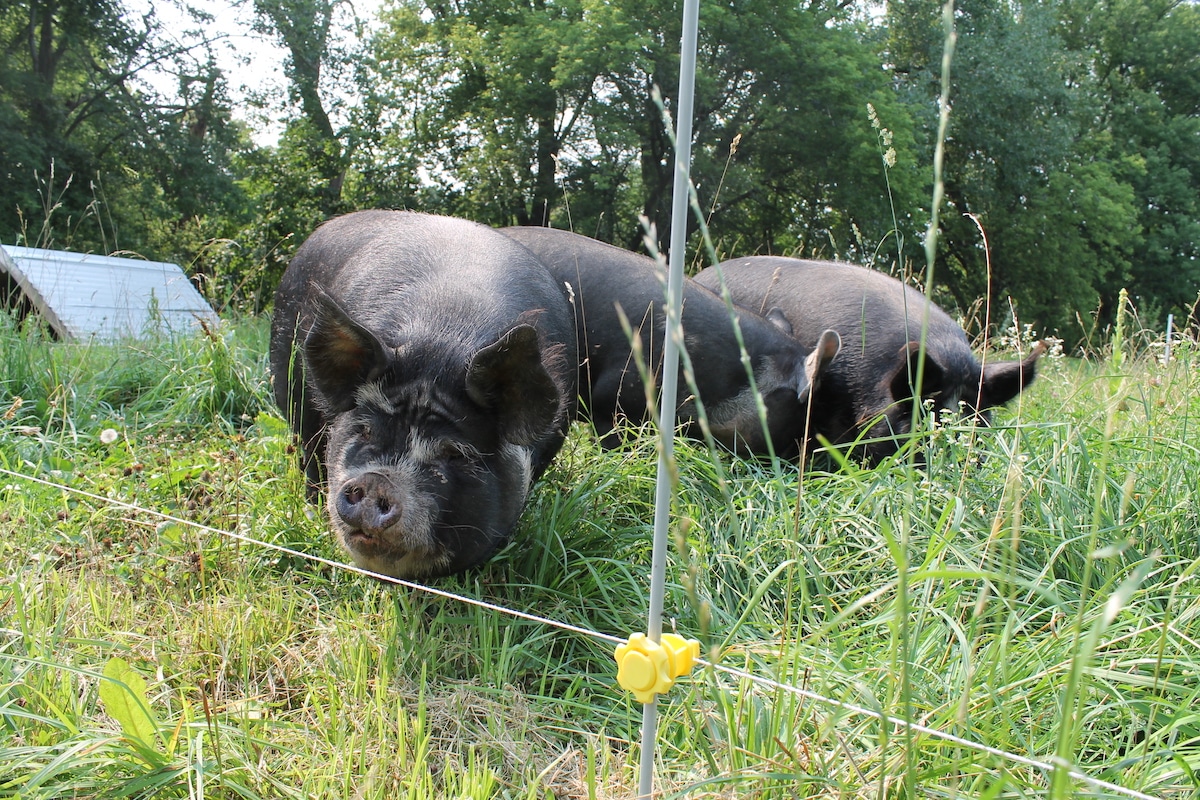
More Perennials
We’ve learned that perennial plants don’t happen overnight. They often take time to establish, and then more time to start producing. We’ve started as early as possible with fruit trees, asparagus, raspberries, and rhubarb. But we’d love to keep expanding that! Fruiting bushes, medicinal herbs, edible landscaping. There’s an upfront cost and effort with getting these up and running. But long-term they provide food year after year with little-to-no hands on time.
Flowers
We’ve been quick to discount flowers in the past. If it didn’t provide nutritional value, we didn’t see the need. But we’re trying to slow down a bit and enjoy all the aesthetic beauty that nature has to offer. We’ve started planting wildflowers around our home, but we’d love to grow some more flower varieties that can be both enjoyed in our home, and shared with friends, family, and others in the community.
Food Producing Trees
Both for benefit of shelter and food production, our hope is to plant some larger fruit and nut producing trees throughout our back pasture. This Savannah, or park-like, landscape can, 1) allow for a thriving pasture to grow beneath it, 2) provide valuable shade for our animals on warm summer days or shelter during storms, and 3) grow food for us to gather up as a family.
Your Homestead Layout!
So there’s a little glimpse into our homestead layout and some of the principles we used to get to where we are.
Remember that your homestead is unique to YOU! There’s no pressure to match or replicate what anyone else is doing. Every step you take is moving you and your family toward a more resilient future.
And lots of small steps add up to really great things over time!
We’d love to hear what you’re considering for your homestead layout, or where you’re feeling hung up!
Drop us a note below and happy homesteading, friends!
Pin it for later!

